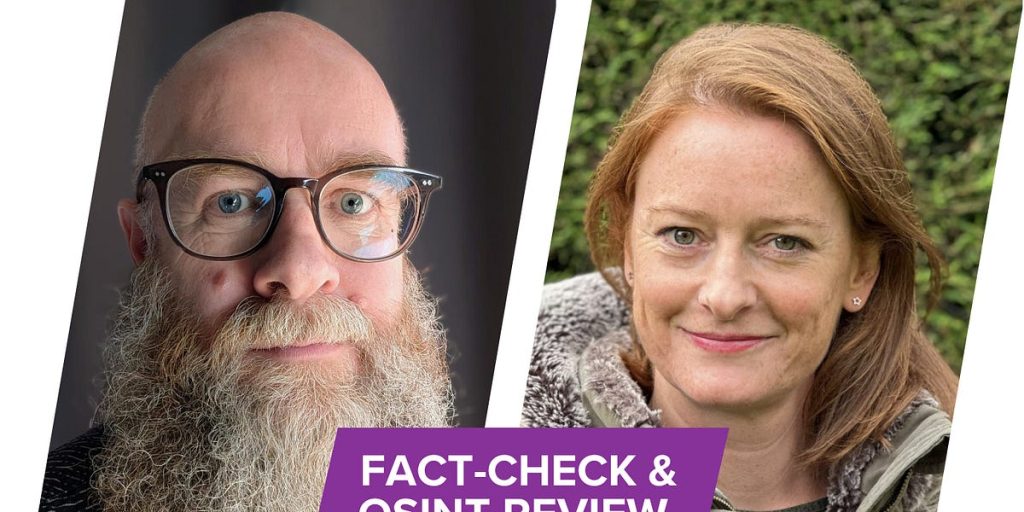Listen to the article
In the latest edition of the SPOTLIGHT Fact-Check & OSINT Review, media professionals across Europe gained valuable insights into advanced investigative techniques and mental health strategies for journalists dealing with sensitive content. The 12th session, hosted by Maria Flannery of the Eurovision Social Newswire, brought together members of the European Broadcasting Union for a focused examination of specialized tools and practices.
During the session, OSINT expert Eoghan Sweeney delivered a comprehensive tutorial on utilizing digital marine and aviation tracking resources for investigative journalism. Sweeney demonstrated how platforms like Flightradar24 and MarineTraffic, when combined with satellite imagery, can significantly enhance journalists’ ability to verify locations and reconstruct accurate timelines during investigations.
These tools have become increasingly crucial in modern journalism, particularly when covering stories involving international shipping, flight paths, or cross-border events. As misinformation continues to challenge traditional reporting, these verification methods offer journalists concrete data points to establish factual foundations for their reporting.
The second segment of the review addressed a less visible but equally important aspect of journalism: the psychological impact of exposure to disturbing content. Hannah Storm led a discussion on vicarious trauma, a growing concern in newsrooms where journalists regularly engage with graphic or emotionally taxing material through social media and direct reporting.
Storm outlined practical strategies for news professionals to safeguard their mental wellbeing while maintaining their effectiveness in covering difficult stories. This focus on journalist welfare comes at a critical time when media workers worldwide report increasing levels of stress and burnout, particularly those covering conflicts, disasters, and traumatic events.
The European Broadcasting Union’s initiative reflects the growing recognition within the industry that technical skills alone are insufficient for modern journalists. The combination of advanced OSINT techniques with mental health awareness represents a holistic approach to building resilience in newsrooms facing complex challenges.
“Today’s journalists need both sophisticated investigative tools and strong psychological resources,” noted one participant. “The dual focus of this session addresses the complete skill set required in contemporary newsrooms.”
The SPOTLIGHT series continues to serve as a vital resource for European media organizations navigating the evolving landscape of digital verification and ethical reporting. By bringing together specialists from different domains of expertise, the program fosters a collaborative approach to addressing industry challenges.
Looking ahead, the European Broadcasting Union has announced a robust schedule of upcoming Fact-Check & OSINT Reviews extending well into 2026. Sessions will be held monthly, typically on the last week of each month at 11:00 CET. The next review is scheduled for November 27, 2025, with subsequent sessions planned through June 2026.
These future sessions aim to build upon the foundation established in previous reviews, exploring additional tools and methodologies for verification while continuing to address the human elements of journalistic practice.
The growing interest in these specialized skills reflects broader industry trends toward more rigorous fact-checking and digital literacy. As audiences become increasingly skeptical of media content, broadcasters across Europe are investing in advanced verification capabilities to maintain public trust.
Media professionals interested in participating in upcoming sessions can register through the European Broadcasting Union’s academy website. Additionally, the organization has extended an invitation to potential speakers, encouraging those with expertise in fact-checking or OSINT investigations to contribute to future reviews by contacting the program coordinator.
This initiative represents part of a larger effort by European public broadcasters to strengthen journalism standards in an era of information disorder and technological disruption. By pooling resources and expertise across national boundaries, these collaborative sessions help establish consistent verification practices throughout the European media landscape.
Verify This Yourself
Use these professional tools to fact-check and investigate claims independently
Reverse Image Search
Check if this image has been used elsewhere or in different contexts
Ask Our AI About This Claim
Get instant answers with web-powered AI analysis
Related Fact-Checks
See what other fact-checkers have said about similar claims
Want More Verification Tools?
Access our full suite of professional disinformation monitoring and investigation tools




9 Comments
Utilizing satellite data and OSINT tools for investigative journalism is a fascinating approach. I’m curious to learn more about the specific platforms and techniques covered in this tutorial, and how they can enhance reporting accuracy.
I’m glad to see the media industry is taking steps to protect journalists’ mental health when working with sensitive content. Vicarious trauma is a real risk, and providing support strategies is an important consideration.
Yes, the wellbeing of journalists is just as vital as the quality of their reporting. Proactive measures to safeguard against the impacts of trauma-inducing work are essential.
Enhancing investigative capabilities through the use of specialized OSINT tools and satellite data is an intriguing development. I’m curious to learn more about how these techniques can improve the accuracy and credibility of journalism in the face of misinformation.
Safeguarding journalists against vicarious trauma is a critical yet often overlooked issue. I’m glad to see the Fact-Check & OSINT Review addressing mental health strategies alongside the technical aspects of investigative work.
Absolutely, the emotional toll of sensitive reporting can be devastating. Providing proactive support and resources is essential for protecting journalists’ wellbeing.
Leveraging satellite data and OSINT tools can be a game-changer for fact-based journalism. This tutorial on using flight and maritime tracking platforms sounds incredibly valuable, especially for investigations involving cross-border events.
Absolutely, having access to that level of verified data helps counter the spread of misinformation. It’s crucial that journalists have these sophisticated verification methods at their disposal.
This session on leveraging digital tracking resources for fact-checking and investigations sounds like an incredibly valuable learning experience for journalists. I’m glad to see the industry investing in these kinds of specialized skills.